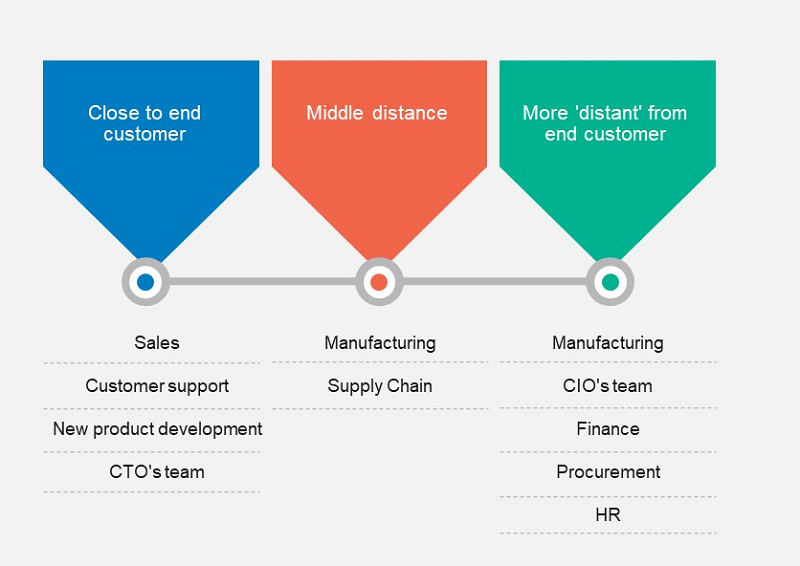Get the Business in the Room
Serve a customer or serve someone who does. That’s the business
It may be true, it may be a myth, that there was once a senior executive who said, ‘marketing is too important to be left to the marketing people.’
It is definitely true that there is a libertarian think tank that says, ‘democracy is too important to be left to the politicians.’ And it is also true that technology is too important to be left to the IT department. Ditto procurement. It is too important not to be seen as a strategic capability.
When deciding on a procurement technology strategy, please do not confine the decision-makers to IT and procurement. You must have the 'business' in the room – and procurement is not the business. People from the business will bring different perspectives as they value different things. Ideally, there will be strong customer advocates in that room. Trying to make technology decisions without the business, and the customer represented in the room, is inconsistent with being digital.
Our proximity to the customer influences the way we think
Shifting to a digital mindset and digital ways of working has different impacts on the various functions within an organisation. Main differences stem from the distance a function is from the true end customer (or citizens, for government organisations). By ‘distance’ I mean how direct or immediate the impact of their work is on the end customer.
For example, the sales function deals directly with the customer, while the CIO's team generally serves other internal service functions and employees, as does finance, procurement, and HR. These corporate service functionsare one or more steps removed from the end customer. The table below illustrates different positioning of some functions in a typical large organisation.

Conversely, the functions further away from the customer are less likely to embrace the same perspective because the impact on the end customer (and hence revenue) is harder to see and they usually think from an internal perspective.
Digital procurement is not about implementing Ariba, Coupa, Zycus, Ivalua, Jaggaer, or any other off-the-rack system. Systems like these may be involved, but only in service to the broader aim of delivering delightful customer experiences. If you have the system but have not changed the focus to customers, then please don't call it digital.
Think of relationships all being linked together in some way
So, how do internal service functions contribute to delightful customer experiences? That's the $64,000 question that YOU need to find the answer to for your organisation. You need to understand the cause-and-effect chain from the end customer’s experience, through all the internal links, to what your function does.
When you understand these relationships, then you can decide what you are going to do about improving performance in areas that matter, including what and where technology is going to be most helpful. And, when deciding on the cost/benefits of each potential initiative, you must have the wider business in the room because it has a closer connection to the end customer.
Let's imagine you could improve the procurement experience and reduce the time required by end-users in your business by 30%. The CFO will usually not count that as a benefit because whole jobs cannot be eliminated but ask a manager that runs the large projects area what they think of it. They will see a 30% reduction in cycle times as a big benefit because they care about the time their expensive project managers spend buying things. They will be a supporter because it is easy for them to see the links between the project managers’ operating speed, the way they utilise their time, and the end customer experience.
It can all be summarised by a simple mantra, ‘if you’re not serving a customer, you’re serving someone who is.’ So please, get the business in the room when deciding on procurement technology strategy.





